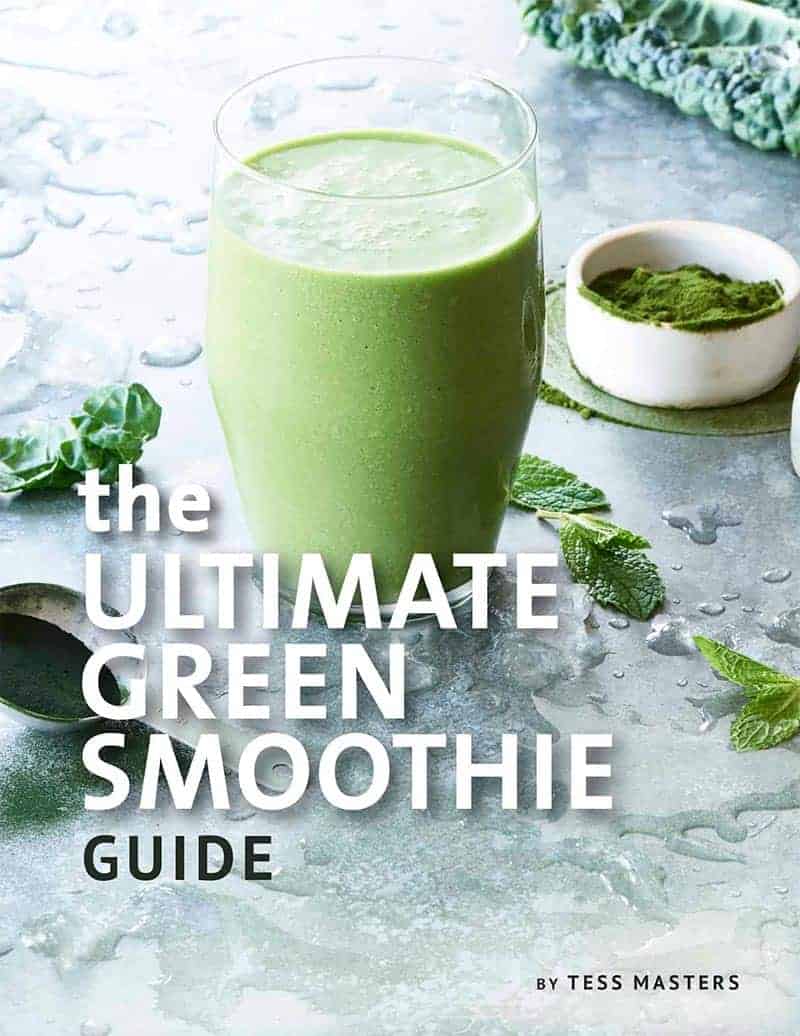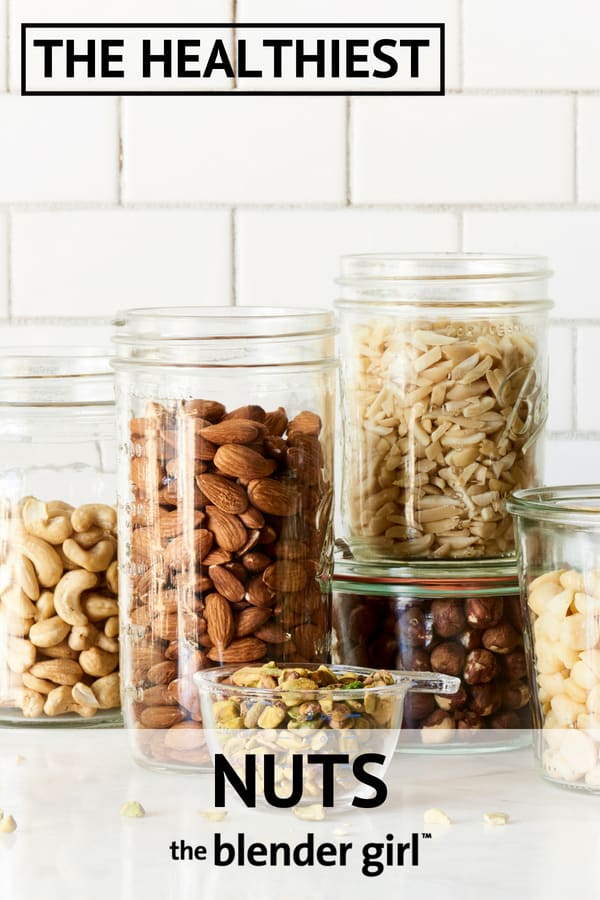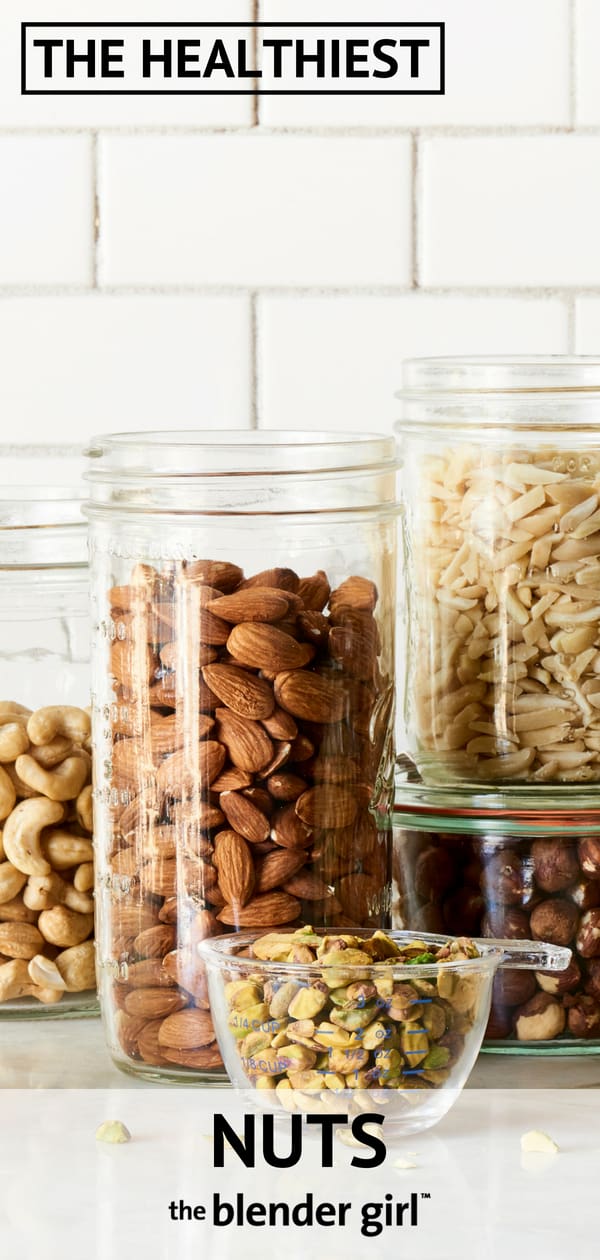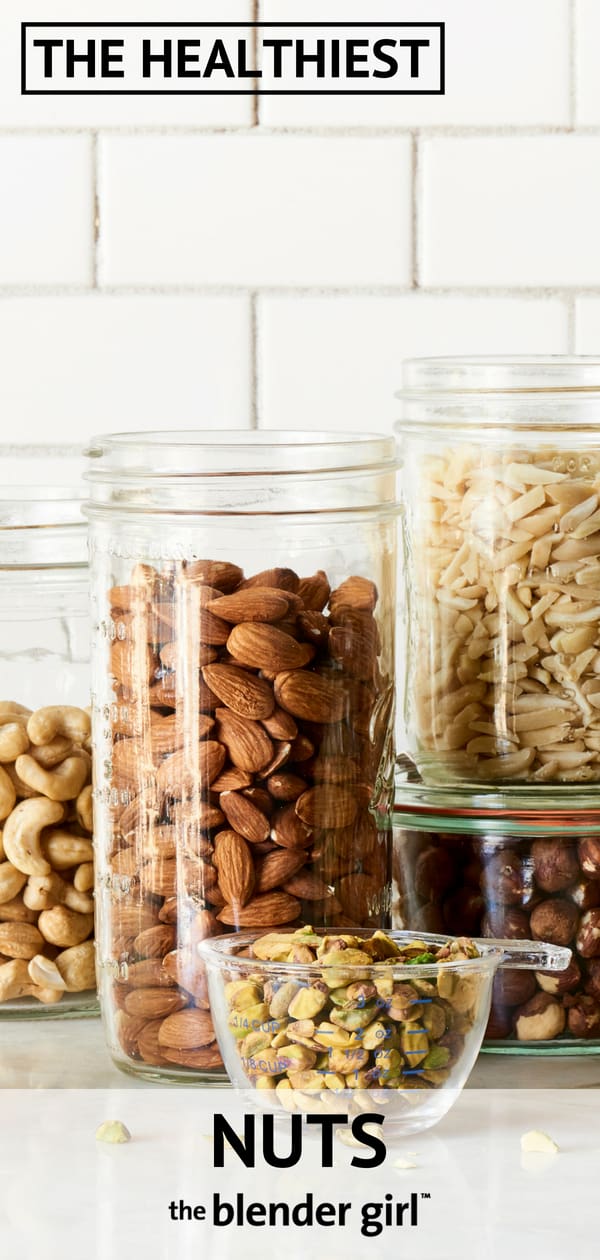Nuts
Tips for selecting, storing, and using almonds, cashews, walnuts, pecans, hazelnuts, and more to create delicious healthy recipes.
Raw Nuts
Nuts are a fantastic additions to all kinds of recipes bringing a crunchy texture and gorgeous nutty flavor to dishes, as well as offering protein, healthy fats, vitamins, minerals, and fiber.
Add nuts to salads, stir-fries, stews, and curries; making nut milk or nut butter; add to dips, spreads, creams, and sauces; enrich baked goods, pancakes, and waffles; blend them into soups; use them to binding slices and protein; add them to burgers and veggie patties; stir them into yogurt; add to cereal or fruit; add to trail mix; or just enjoy them by the handful for a quick easy snack.
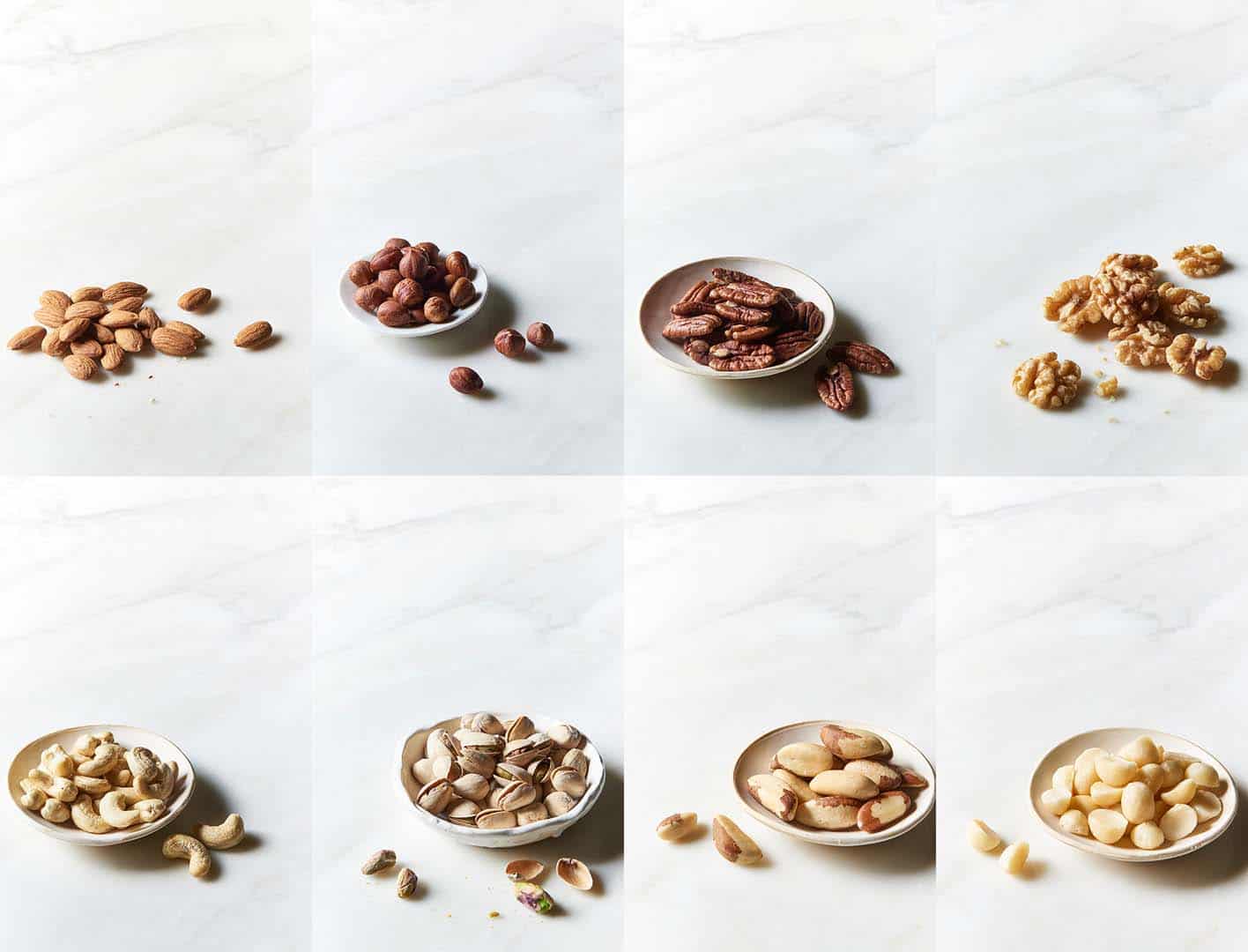
The health benefits of nuts
Raw nuts are loaded with protein, fiber, vitamins, minerals, and healthy fats, and are known to help lower blood pressure, cholesterol, assist with heart health, bone density, regulate blood sugar levels, and hormone levels.
With powerful antioxidant and anti-inflammatory properties, raw seeds help combat free radical damage and promote cellular renewal.
Nuts also assist with colon health and promote detox and the elimination of toxins.
The lowdown on raw nuts
The health-promoting fats in raw nuts become rancid when heated, so it's best to consume nuts raw, not roasted.
A lot of the nuts that are labeled “raw”, are actually not. They are simply “not roasted”.
Most commercially produced nuts have been steamed or roasted out of their shells.
However, there are some companies that adhere to very high standards of production. They harvest and shell their nuts without heating the raw nut, and split open the shells by hand or by soaking them, leaving the nut raw.
These truly “raw” nuts are fantastic. Their taste and nutritional profile is superior.
However, these "truly raw" nuts are extremely expensive making them cost prohibitive for most of us.
So, for the purposes of accessibility, when I say "raw" I am referring to nuts that have not been roasted.
How to select raw nuts
Purchase raw nuts and seeds from a health food store or online source with a high turnover to ensure maximum freshness and quality. Whole nuts that have not been shelled have the longest shelf life. Look for shells without cracks and holes that do not rattle when shaken. Shelled nuts are most widely available. Always purchase nuts that are full and plump without any shriveling. I always purchase whole shelled nuts instead of nut pieces. These have an even shorted shelf life. I prefer to use my food processor and chop them up myself or grind them as I need them. The fat content and the delicate nature of the raw fats and oils makes nuts and seeds highly susceptible to rancidity.
Purchase raw nuts from a health food store or online retailer with a high turnover to ensure maximum freshness and quality.
I don't recommend purchasing nuts from bulk bins as these nuts have been exposed to a lot of oxygen, as well as bacteria from handlers and other shoppers.
Whole nuts that have not been shelled have the longest shelf life. Look for shells without cracks and holes that do not rattle when shaken.
However, shelled nuts are most widely available.
Always purchase nuts that are full and plump without any shriveling. I always purchase whole shelled nuts instead of nut pieces. Nut pieces have an even shorter shelf life and can go rancid very quickly.
Soaking nuts
Nuts contain anti-nutrients that can cause digestive issues.
Soak nuts to neutralize enzyme inhibitors, activate digestive enzymes, unlock the full nutrient potential of the nut, and refine the texture for culinary purposes.
Learn more about the reasons for soaking nuts and how to soak them for health and cooking here.
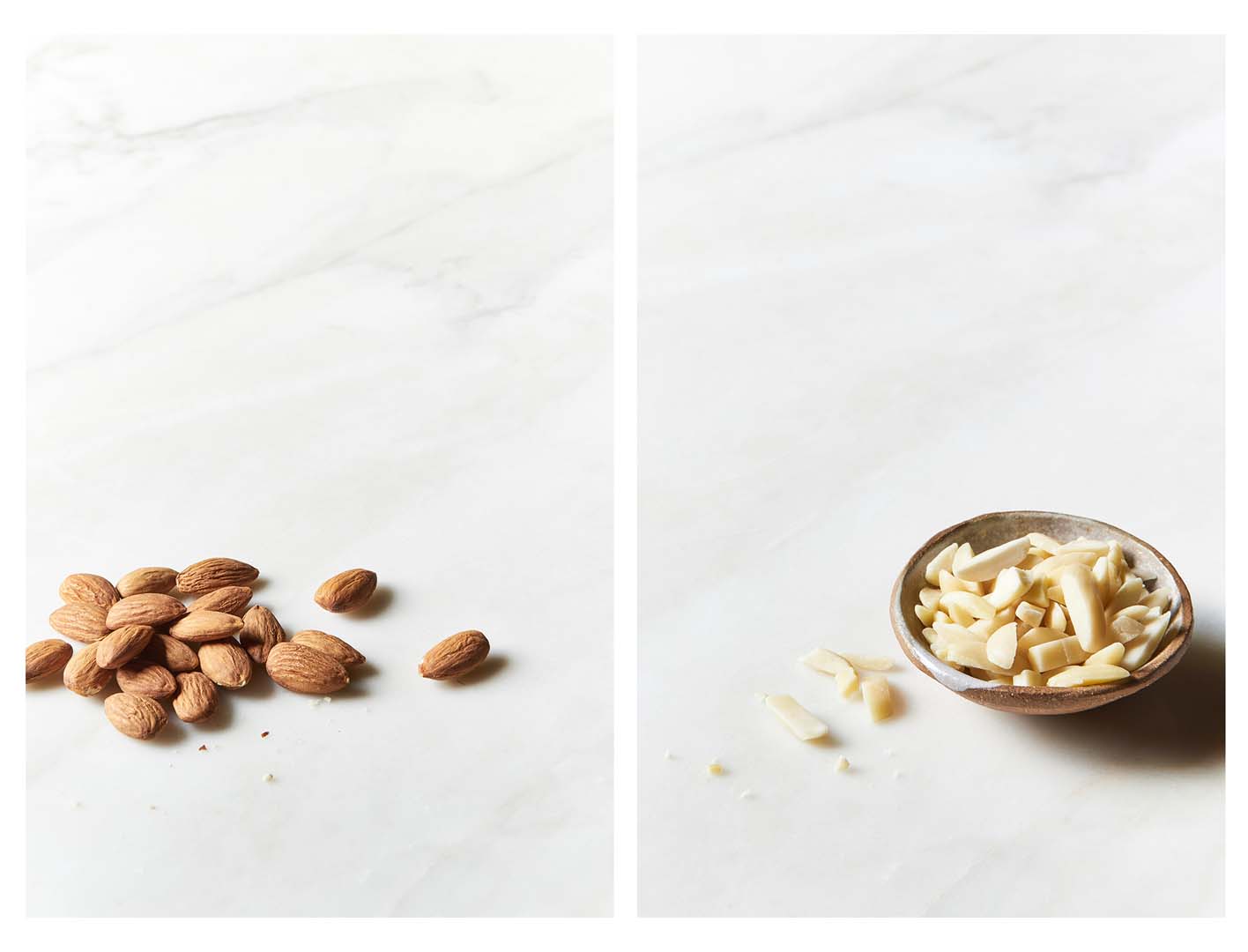
Almonds
Commonly referred to as nuts, almonds are technically the seeds of the fruit of the almond tree which is closely related to the peach and apricot trees. But unlike peaches and apricots, which yield fruits with a sweet fleshy pulp around their stone-like seeds, almonds develop a hard leathery shell. It's the hard brown-skinned pit beneath this shell that we enjoy as the almond nut.
Almonds are loaded with essential nutrients. They are high in monounsaturated fats, which are the heart-healthy fats good for lowering high-density lipoproteins and stabilizing cholesterol levels. Better still, almonds are one of the only alkaline nuts, and have a relatively large protein content of almost 20%. Did you know that ¼ cup of raw almonds contains more protein than an egg?
Raw almonds are a fantastic energy booster, and have been shown to lower the glycemic index of other foods when eaten together, and can therefore be helpful in lowering blood sugar levels and controlling diabetes. They have also been linked to gall bladder and colon health too. Almonds are also a good source of B2, magnesium, copper, manganese, phosphorus, and an excellent source of Vitamin E for healthy skin.
Almonds are loaded with antioxidants to help offset free radical damage. They have immune boosting and anti-inflammatory properties as well.
Almonds come in sweet and bitter varieties. Bitter almonds are used to make amaretto, but are not eaten raw as they contain cyanide and other toxins which must be processed for human consumption.
Sweet almonds can be purchased complete in their outer shells, or shelled, which is the most common way to purchase them.
Shelled almonds are sold raw, roasted or blanched. Blanched almonds have been treated with hot water to remove the thin brown-skinned coating to reveal the creamy flesh. Blanched almonds are sold whole, sliced or slithered.
Enjoy almonds as snack on their own or in trail mixes; toss them with yogurt and fruit; I munch on them raw as a quick snack; make almond milk and almond butter; throw them into smoothies; process with dates to make crusts and desserts; or grind to make almond flour in baked goods.
Grind raw almonds with flax seeds and sunflower seeds to make the liver-cleansing condiment, LSA.
Blend blanched almonds into soups and sauces to bring a creamy texture.
Cold-pressed, sweet almond oil is a fantastic natural skin moisturizer.
I always purchase and consume my almonds raw, in order to get the maximum nutritional benefit without any carcinogens. Choose fresh, good quality organic almonds from a health food store with a high turn over to ensure maximum freshness. I like places that keep their nuts in the fridge. Almonds that are still in the shells have the longest shelf life, and would be preferably stored in hermetically sealed containers. Choose shells that are not split or stained. They should smell sweet and nutty. If they smell bitter, they are rancid.
Almonds are really susceptible to rancidity because of their high fat content, so always store them in a sealed glass jar in the fridge. Then they will keep for a few months. You can freeze almonds for up to a year, but they don’t even last a week in my house! Almonds that have been broken up have an even shorter shelf life.
For this reason, if I need to use blanched almonds for a recipe, I prefer to blanch my own. Just plunge in boiling water for a few minutes until the thin brown skin starts to swell. Rinse them under cold water and then rub in a tea towel, or with your bare hands. The skins should slide right off.
Roasted almonds are delicious and make a popular snack. But I never eat roasted nuts, as roasting at such high heat destroys the delicate health-promoting oils and produce carcinogens that create toxins in the body.
Almonds contain enzyme inhibitors that can cause digestive issues.
Always soak almonds prior to eating.
Almonds are high on the allergen list and should be avoided by people with nut allergies. However, individuals should be tested for each nut.
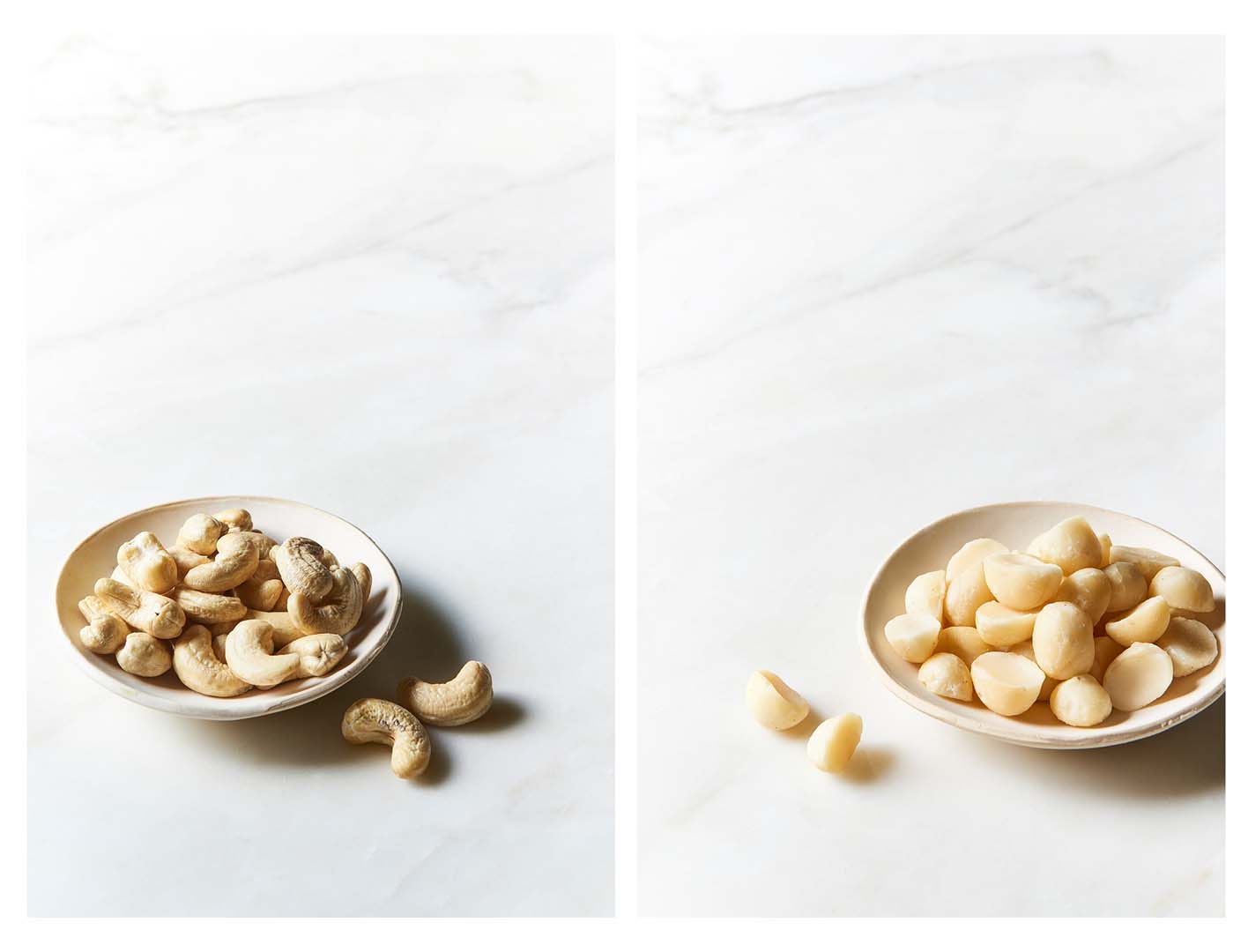
Cashews
Not strictly “nuts” but rather the seeds that dangle from the “cashew apple” fruit of the cashew tree – a jewel native to Brazil. This is good news for tree nut allergy sufferers, who may not be affected by cashews. Whilst cultivation began in Europe, it is the Portugese introduction to India that has seen them become the major international suppliers of cashews, along with some African nations.
You will never find cashews in their shells. This is because the precious seeds must be removed from the drupe and the outer double layer, which contains caustic resin that is harmful to health and irritates human skin causing horrible rashes. This toxic layer is removed by either roasting, steaming or soaking.
Try to purchase raw cashews that have been soaked or hand-shelled. I know they are most popular when roasted and salted. But as scrumptious as this is, roasted nuts are carcinogenic, and you will get the most nutritional value out of your cashews if you leave them raw.
Raw cashews are a great source of protein and a good source of magnesium, zinc, copper, iron, folate, vitamin E, B vitamins, and some calcium. Studies have shown cashews can help maintain heart health; protect against high blood pressure; and can also help with fatigue, headaches, muscle soreness, and spasms.
They can also help to support healthy bones, teeth and muscles; and help the body utilize iron and eliminate free radicals.
Cashews have a high fat content. However, because of the high levels of monounsaturated fatty acids, such as oleic acid, they can assist with heart health and lowering cholesterol.
Cashews are actually considered one of the low fat nuts, with a lower fat content per serve than peanuts, almonds, walnuts and pecans. They have a high energy density, and lots of dietary fiber.
I use cashews as a topping for salads, curries, and stir-fries; to crunch up fruit salads; enrich baked goods and raw treats; for making milk and and butter; as a base for creams, cheeses and sauces. I will also use a handful to bring a rich creaminess to soups, stews and curries.
Macadamia Nuts
Thank you Australia, for giving us the glorious macadamia nut. I know it was Hawaii that put them on the international stage, but at the risk of sounding parochial, Australia is still the largest producer of macadamias and they are of superior quality! Aussies grow up eating macadamias – raw, salted, sweetened, chocolate covered. We will take them any way we can get them.
I use macadamias a lot to cream soups and stews; as a base for dips, spreads, salad dressings and frosting; and to enrich baked goods. They are so naturally rich, buttery and creamy that they are invaluable in the plant based world, as they lend themselves beautifully to sweet or savory flavorings.
Macadamia nuts combine well with chocolate, vanilla, sun-dried tomatoes, roasted vegetables and herbs. My favorite decadent smoothies are made with macadamia nut milk, chocolate and banana; and try making ice cream with raw home made macadamia butter. I will occasionally eat a few as a snack. But I find them incredibly rich, and will always grab for some raw almonds first.
Raw macadamias are highly nutritious. They have the highest amount of the good beneficial monounsaturated fat oleic acid (omega 9) of any nut; and they are cholesterol and sodium free.
Macadamia Nuts contain about 10% protein and 10% carbohydrate, which is lower than most nutty counterparts. But they contain the highest amount of selenium; second only to Brazil Nuts. And they are loaded with zinc. They contain potassium for healthy brain, metabolic function, and muscle strength; manganese, which lowers blood sugar, and aids in the absorption of calcium, and therefore, bone function; thiamin for heart health and digestive health; and fiber to dial up detox.
The only draw back to macadamias is that they are really expensive. This is largely due to the fact that the outer kernel is so hard and difficult to crack open. You very rarely find unshelled macadamias for this reason.
Macadamias are extremely high in fat and are incredibly susceptible to rancidity. They should always be purchased as fresh as possible, and stored in a sealed glass container in the fridge.
I mainly use macadamias in raw dishes so as not to heat or roast them in order to preserve the delicate fats and oils. But, I blend raw macadamias into soups and stews for a rich creamy texture.
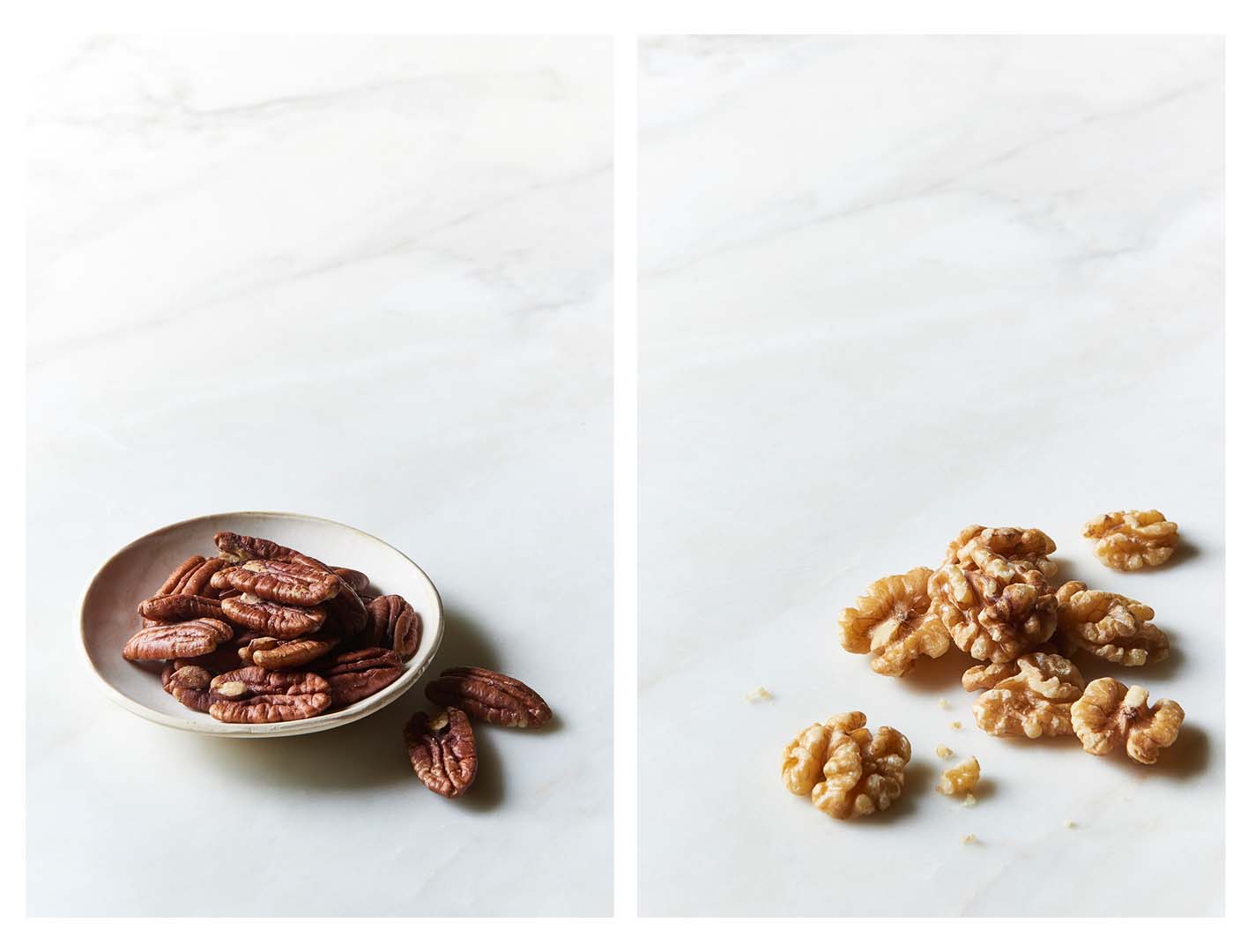
Pecans
This delectable nut comes from the fruit of Hickory tree or Pecan tree native to the Americas. Pecans are another decadent wonder we acquired from the Native Americans, who enjoyed pecans for centuries. The European settlers were a bit slow off the mark, and it was the Mexicans who started the first plantations in the 17th century, with plantations cropping up all over North America some time later. Mexico still grows pecans in plentiful amounts today. But it is the United States that produces over 80% of the world’s pecans. They are also grown in Australia, as well as parts of Central and South America, China, Israel and South Africa.
As with so many other nuts, pecans are technically a drupe (a fruit with a single stone) that matures and splits. Pecans resemble walnuts in appearance and taste.
Pecans are an excellent source of protein and healthy unsaturated fats that can lower cholesterol and protect against heart disease. They also contain significant amounts of Vitamin E, which has powerful antioxidant properties. Offering calcium, magnesium, phosphorus, potassium, zinc, and Vitamins A and B, pecans are also a great source of fiber, and are sodium and cholesterol free.
As with all other nuts, pecans should be eaten in moderation as part of a balanced diet. Pecans do contain significant amounts of omega 6 fatty acids, but only about half as much as walnuts.
Pecans can be eaten raw, but I find them too rich and buttery for snacks. I mainly use them to make sweet treats like desserts, baked goods, ice cream, and pralines. Home made pecan milk and pecan butter is delicious! Try stirring through some pecan butter or chopped pecans and maple syrup for a quick praline ice cream.
Pecans can be purchased whole or shelled. Always buy pecans from a health food store with a high turnover to ensure maximum freshness. The shells should not have any cracks or holes and the nut should not rattle if shaken. Most pecans available are shelled. The nuts should be full and plump. Never buy pecans that have shriveled. These nuts are past their prime. Pecans have a high fat content and are highly susceptible to rancidity. Store in a sealed container in the fridge or freeze.
Walnuts
There are about 21 species of walnut trees, but a lot are not harvested for culinary use due to the shells being too hard and the kernels being too small. They, like so many of the other “nuts” are actually drupes, which dry when matured to leave the outer layer, shell and seed that we eat as the walnut. The most popular varieties cultivated for human consumption are the Persian or English Walnut which was native to India and The Middle East, but is now found widely in Europe and other parts of the world; and the Black Walnut and White Walnut, which are native to North America.
Despite this, the English walnuts are the variety most commonly found in the United States. In fact, a large percentage of the world’s supply of walnuts are produced in California. But significant amounts of walnuts are cultivated in China, Iran, Turkey, Romania and France. English walnuts have shells that are easily opened with a nutcracker, and thin skins and large nuts that yield the most meat, making them very easy to use.
Walnuts are a wonderful source of essential fatty acids, and have the highest amount of omega 3; in fact just 1/4 cup accounts for over 90% of the recommended daily allowance. These unsaturated vegetable fats are known to have powerful anti-inflammatory properties, and have been shown to boost brain activity and cognitive function; as well as assist with asthma, arthritis, bone health, and skin conditions such as psoriasis and eczema. These healthy fats also lower cholesterol and blood pressure, assisting with cardiovascular health. No coincidence that walnuts look exactly like the two hemispheres of a brain!
Walnuts also contain powerful antioxidants such as ellagic acid, which boosts immunity and combats free radical damages and cancer. They are also a great source of copper and manganese, which boost these antioxidants, as well as calcium, iron and fiber.
Another benefit of walnuts is the amount of naturally available melatonin. Melatonin is a hormone produced by the body that regulates sleep. Melatonin is also a powerful antioxidant. The amount of melatonin our bodies produce decreases with age, so consuming a handful of walnuts a few times a week could be even more beneficial for older people.
Purchase walnuts whole or shelled. The whole variety have a longer shelf life. Make sure the shells are not cracked or stained and do not smell rancid. Purchase from a health food store with a high turnover to ensure maximum freshness. Shelled walnuts are even more susceptible to rancidity due to the high polyunsaturated fat content, and need to be stored in a sealed container in the fridge.
Always choose plump (not shriveled) kernels from health food stores with a high turnover to ensure maximum freshness and quality, and consume within about six months.
I always soak and dehydrate my raw walnuts. They have a naturally bitter flavor, so I don’t tend to eat them by the handful on their own for a raw snack as I do with raw almonds and raw macadamias. But walnuts are gorgeous for complimenting sweet and savory flavors, making them a versatile addition to a myriad of dishes. I often throw them with raw salads and fruits to balance out the sweetness, or toss them into grain pilafs for an added crunchiness and depth of flavor. They are also gorgeous in baked goods.
I absolutely love using them with banana and maple syrup, chocolate, apples, carrot and zucchini.
Walnut pastes make a great base for dips, pates and spreads such as the fabulous Muhammara. Walnuts are a great topping for cereals, puddings and yoghurts. They also work beautifully with dried fruits and cheeses.
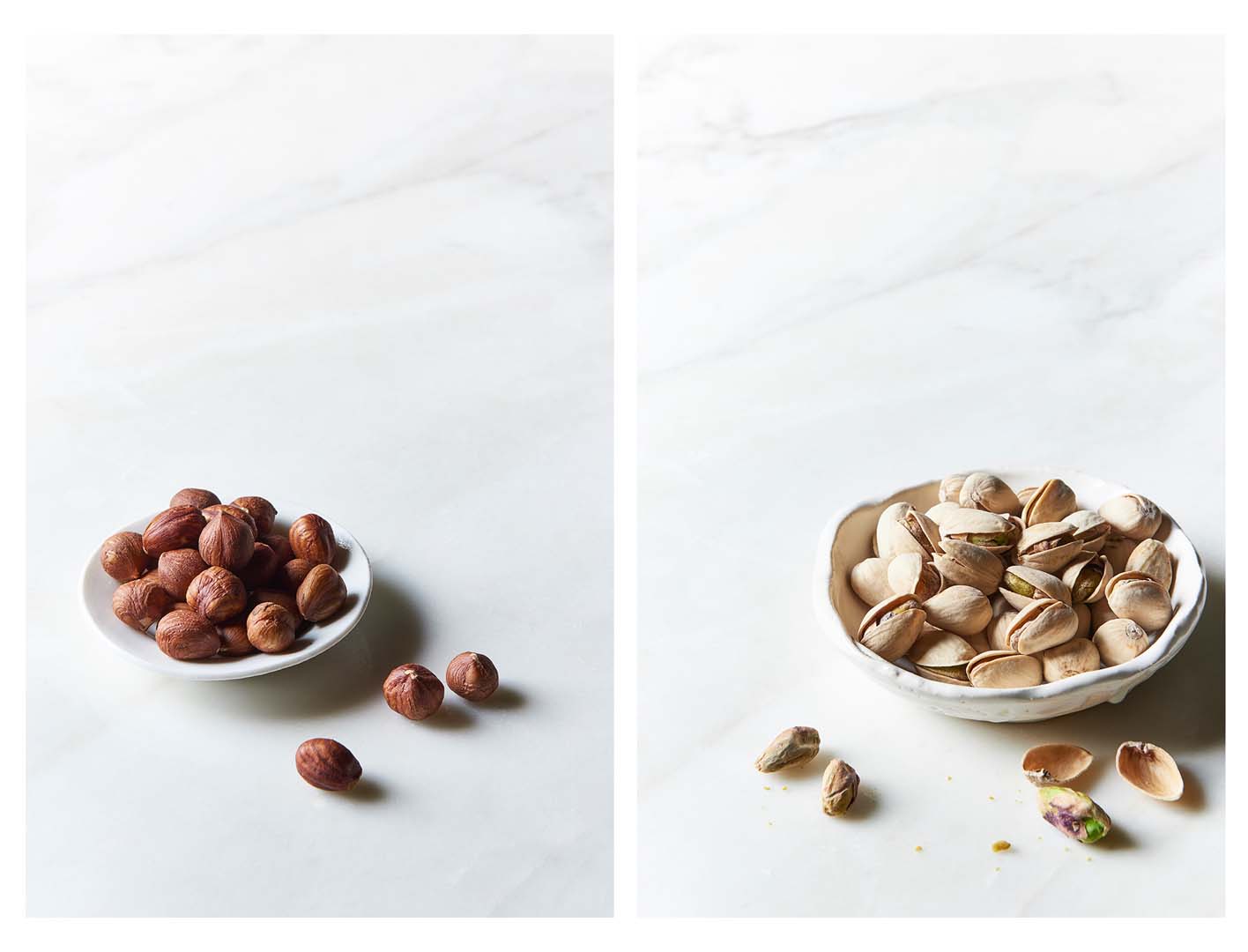
Hazelnuts
The nut from the Hazel tree is delicious. Hazelnuts are generally reserved for decadent treats like pralines, chocolates tortes, ice creams, hazelnut butter and chocolate spread, and chocolate pancakes!
You can eat hazelnuts raw or toasted. I don’t eat them very often and most often make a rare exception and roast them to enhance their mild sweet flavor for use in treats. I always skin them to remove the bitterness that is contained in the brown skins. You can blanch them or roll them in a tea towel to skin them. Hazelnuts are also fantastic in salads.
Turkey is the largest producer of hazelnuts. But they are also harvested in the U.S, Italy, Canada, Australia, and New Zealand.
Try making your own naturally sweetened pralines or chocolates using hazelnuts. They are to die for and slightly less naughty. Homemade hazelnut sauce made with raw cacao nibs, coconut butter, hazelnuts and sweetener is fantastic drizzled on ice cream or fruit. I do occasionally use hazelnut oil in some recipes.
Purchase hazelnuts shelled and unshelled. Hazelnuts have a smooth, brown glossy shell that should have no cracks or holes. To check if they are fresh, pick them up and shake them. If the nut rattles inside they have lost their moisture and spoiled. Shelled hazelnuts should be plump; any shriveled hazelnuts have passed their prime.
Always choose hazelnuts from a store with a high turnover, and store in the fridge or freezer. Hazelnuts should be used within a month or so. I only purchase hazelnuts as I need them.
Hazelnuts do have a high fat content, are are considered decadent; but they are also rich in protein, dietary fibre, magnesium and B Vitamins; and have the highest antioxidant content of any nuts; and the lowest percentage of saturated fats (as well as almonds and pine nuts) of any nuts.
Hazelnuts also contain significant amounts of calcium, iron and zinc; and are a good source of oleic acid and other heart-healthy fats. They are also one of the richest sources of Vitamin E; and are known to help combat heart disease and cancer.
Pistachios
Like many other “nuts”, pistachios are not botanical nuts but the seed of the fruit or drupe of the pistachio tree. Pistachios are native to the Middle East and are commercially produced in Syria, Iran, Greece, Turkey, Italy, China, Morocco, Australia and Mexico. The United States (mainly California) and Iran remain the largest producers of pistachios. Pistachios have a hard beige shell that expands when it ripens to crack open so we can get our little fingers into that delicious purple/green meat. It’s almost like they are begging to be devoured.
It is hard to quit eating pistachios. They make such a delicious power snack, or perfect to have with drinks before dinner or to watch a movie. The ones that don’t open — it is nature’s way of saying “don’t eat me”. These are kernels that have not grown properly and should be discarded. Pistachios lend themselves beautifully to sweet or savory flavorings and can be added into any baked goods or sweet treats. I will give absolutely anything “pistachio-flavored” a go!
Pistachios are loaded with protein, fiber, calcium, iron and Vitamin E. They have been linked to reducing cholesterol levels and are full of antioxidants.
You can purchase pistachios roasted and salted. But like all the other nuts, I prefer to eat them raw to capitalize on the delicate fats and oils. You can also purchase “pistachio meat” which has been shelled and makes life so much easier. These have a shorter shelf-life and
I prefer to purchase pistachios in the shell. Having them shelled just takes all of the romance out of it! I love to make raw pistachio ice cream, puddings, and smoothies, and I cannot pass up pistachio biscotti and sweet pistachio cookies. Pistachios are also delicious tossed in salads, stir-fries, and casseroles.
Those of you with food allergies: pistachios do contain urushiol, which is an irritant that can cause allergic reactions. Pistachios have a high fat and low water content and should always be purchased from a store with a high turnover to ensure freshness and quality.
Store in a sealed glass container in the fridge or store shelled pistachios in the freezer.
Try making your own pistachio butter in your blender by adding a tiny bit of grapeseed oil.
Brazil nuts
Not strictly “nuts”, but seeds. The Brazil nut tree is native to South America, and is one of the many jewels from the virgin Amazon rain forests. The majority of the world’s supply is harvested in Bolivia. Brazil and Peru.
Brazil nuts are picked from pristine forests in the wild, rather then from cultivated plantations. The tree envelopes the seeds and forms a large capsule-like coating similar to a coconut, that, when opened, contains a number of (about 10) three-sided shelled seeds which we know as Brazil nuts.
When shelled, these seeds are rich and creamy with a dark brown skin, and are loaded with beneficial nutrients. They are one of the richest sources of selenium (about 2,500 times more than any other nut), making them a fantastic complete plant-based protein with a full amino acid profile.
Just two raw Brazil nuts accounts for the daily requirement. Selenium intake has been linked to heart and prostate health, as is known to boost immunity. Some studies have also shown it to have anti-aging properties. They contain the amino acid Methionine, which promotes antioxidant production that combats free radical damage and premature aging.
Brazil nuts are also a good source of calcium, iron, zinc, magnesium and Vitamin B. Like all nuts, they are a good source of protein, but are about 2/3 fat with 20% of that being saturated fat, which is one of the highest levels of vegetable saturated fats of all nuts. Brazil nuts are a good source of omega 6 fatty acids, but should be consumed in moderation as part of a balanced diet.
I really love Brazil nuts and eat just two a day for the selenium. But I don’t tend to eat them as much as some of the other raw nuts. Having said that, they are wonderful when combined with raw almonds, raw cashews and raw macadamias for dips and spreads.
Things to be aware of when purchasing Brazil nuts: the shells contain aflatoxins, which have been linked in some studies to liver cancer. The EU have strict importing regulations for whole Brazil nuts for this reason.
Always purchase raw shelled Brazil nuts from a health food store with a high turnover to ensure maximum freshness and quality; and store Brazil nuts in a sealed glass container in the fridge, as these nuts are even more susceptible to rancidity due to their very high fat content.
You can find delicious roasted salted Brazil nuts. But as with all other nuts, this greatly compromises the nutritional integrity of the nut and heating them produces carcinogens, which create toxins in the body. Brazil nuts also contain some of the highest concentrations of phytic acid and should always be soaked and dehydrated before consumption to make them more easily digestible. See my soaking page for more information.
Please note: excessive consumption of Brazil nuts can lead to selenium toxicity which can result in a metallic taste in your mouth, garlic odor in the breath, fatigue, nausea, vomiting, skin rashes and blotches, diarrhea, runny nose, cough, nerve pain, brittle nails, and hair loss. It's best to just eat 2 to 3 Brazil nuts per day.
Pine nuts
The edible seeds of pine, these “nuts” are actually seeds in the botanical sense. About 20 species have seeds that are large enough to harvest.
Each species of pine yields pine nuts of slightly different personalities (size and shape with thick or thin shells) and nutritional profiles. Different countries in Europe and Asia use their native varieties. Europe mainly uses the Stone Pine, which yields plump, ivory seeds that are buttery and bursting with a slightly sweet flavor. They also contain the most protein. North America mainly uses Pinyon pines to obtain seeds. These are the largest pine nuts and are the easiest to shell.
Pine nuts are very important to the Native American community in the United States. There is actually legislation in place to protect their right to harvest pine nuts. Asian pine nuts generally come from the Chinese Nut Pine.
China is now the largest exporter of pine nuts. Their nuts are more triangular, have a milder flavor and are about a third of the price of other varieties. However, they are of inferior quality, and have often been sprayed by toxins before packaging.
I prefer the European varieties. But, you will pay for them! Most pine cones are very hard and need to be heated or sun-dried in order to crack the shells open and collect the seeds. Collecting pine nuts is hard work! They are very often harvested and shelled by hand, which accounts for the really high price.
Pine nuts are a good source of protein, zinc, manganese, Vitamin B and dietary fiber. But more importantly, they have fabulous flavor. They are mostly available shelled and absolutely must be refrigerated.
Pine nuts have the shortest shelf life of all nuts and are the most highly susceptible to rancidity. They can go rancid in a matter of days in hot humid conditions. In fact, a lot of the pine nuts hanging up in the grocery store aisle have already gone rancid, and, as a result have little flavor.
Purchase from a store with a high turnover that keeps their pine nuts in the fridge. You want to ensure a quality product with the best flavor. For this reason, I do not keep pine nuts in the house. I buy as fresh as possible when I need them.
We are all familiar with the delicious Italian pesto that can be made by adding pine nuts to fresh herbs and vegetables. But pine nuts are sensational sprinkled on pizza, salads, stir-fries, casseroles, stews and soups. I often add them to seamed vegetables with some coconut oil. I love them sprinkled over wilted spinach! Pine nuts also add a gorgeous depth of flavor to rice pilafs and other grain dishes. They are also a delightful addition to baked goods. I typically use pine nuts in savory dishes. But I will make Italian and Middle Eastern cookies and desserts that are delicious.
Typically pine nuts are toasted to bring out the crunchiness and flavor. As with all other nuts and seeds, I don’t do this. I almost always eat them raw to protect the delicate oil. If you purchase quality pine nuts from a good fresh source, the raw flavor is sublime. Try making a raw paste with some pine nuts, olive oil, salt and lemon juice.
When I'm missing being in Italy, I will make a paper cone, toast and salt them, and eat them like popcorn, just like the street vendors serve them. Gotta love those Italians. They sure know how to eat!
Chestnuts
There are several varieties of chesnuts which vary in size, flavor and texture — the main varieties being European (or sweet), Japanese, Chinese and American. Don’t confuse these with Chinese water chestnuts which are actually aquatic vegetables.
In the Winter (about September to February), a lot of countries in the Northern hemisphere enjoy fresh chestnuts, which are then roasted for the holiday season.
Italian chestnuts are delicious and are used widely in Italy for gelato, pastas, desserts and baked goods. But you can now find fantastic chestnuts grown in Asia, Australian and New Zealand. The chestnut industry in Victoria, Australia is growing strongly. I purchase delicious chestnut puree to make cakes.
Chestnuts can also be found in cans or jars preserved in water or syrup. You can also purchase dried chestnuts from health food stores, which can be ground into chestnut flour for use in baked goods. This way chestnuts can be enjoyed all-year round, making them a versatile addition to recipes.
Chestnuts have a high water content, They have a naturally creamy, slightly sweet flavor that is quite subtle, which makes them sensational for adding moisture to cakes and breads.
Chestnuts are much lower in calories than most other nuts. They also contain very little fat, that is mostly unsaturated; but the carbohydrate content is a lot higher. Chestnuts contain a lot of starch, which is slowly converted into sugars as the plant matures.





